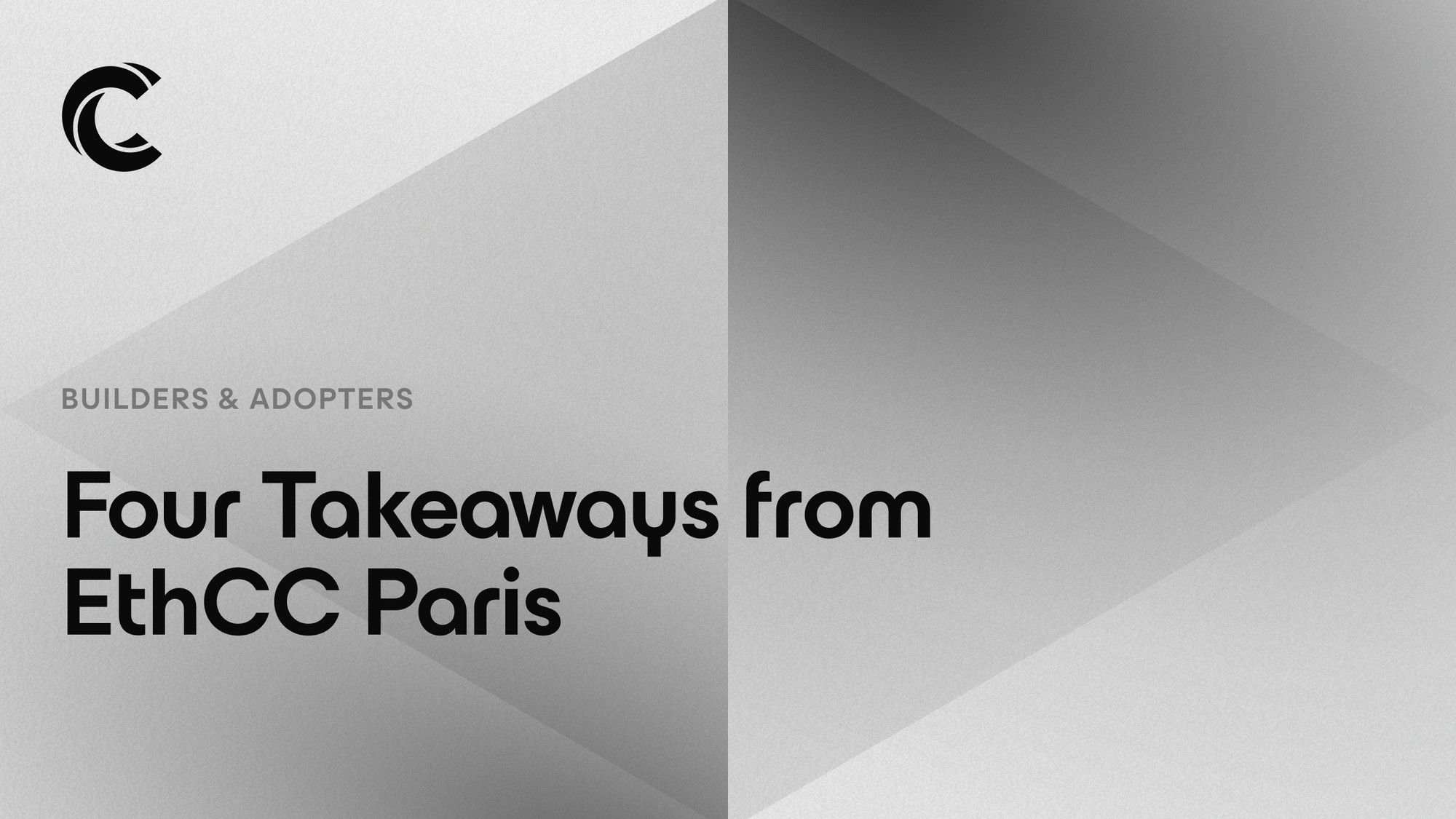Four Takeaways from EthCC Paris

EthCC (Ethereum Community Conference) is the largest annual European Ethereum event, and is broadly considered one of the premier crypto conferences in the world.
Held in the heart of Paris in late July, the conference brought together crypto builders from around the world who discussed key themes, unveiled new projects, and presented progress updates on their apps and protocols.
CoinList sent several representatives to EthCC who met with a vast array of builders and forged new connections with industry leaders. Here are our biggest takeaways:
1. L2s and app chain ecosystems are coming. And coming fast.
Following the success of Arbitrum and Optimism, there was a huge flood of capital in the past 12-18 months into the L2 ecosystem. We are seeing a meteoric rise of projects in the so-called “modular” ecosystem — the separation of execution, settlement, consensus, and data availability to achieve scalability without sacrificing security or decentralization. In the interim, “modular” has roughly been expanded to include the entire ecosystem of interoperability between L1s and L2s and the related infrastructure.
Teams are attacking this space from various angles ranging from shared security models like EigenLayer or Espresso Systems, to L2-as-a-Service like Eclipse, Caldera, or OP Stack, data availability layers, interoperable messaging layers, and much more. While most of this development has occurred in the ethereum ecosystem as the most populated settlement layer, these ideas have also extended into the non-ethereum ecosystems as well with the launch of NeonEVM and various cosmos-specific chains like Berachain and DyDx.
2. Building for developers and crypto natives, not for users and consumers.
Building for “the next billion users” is one of the most common phrases in crypto. Generally projects using this type of catchphrase are actually infrastructure projects focused on scalability (see above). While undoubtedly this is important, ultimately the next billion crypto users are not going to be onboarded simply due to improved scalability. It may well be true that there can’t be useful crypto applications without solutions to the scalability question, but at the same time scalability itself won’t onboard new users.
While there were some interesting consumer use cases outlined during the conference (e.g. Gnosis Safe + Visa credit card or Base’s messaging application via XMPT built into the Coinbase wallet), the majority of those consumer use cases were focused on existing crypto users rather than non-crypto native users. Generally speaking, there does not appear to be a cohesive narrative in crypto at the moment, and the crest has fallen on previous narratives to gain more traction.
3. User acquisition is still broken and still underdeveloped.
Given the limited focus on consumer facing applications, it’s not surprising that user acquisition in crypto is still broken. Most projects don’t have a clear idea on how to acquire users, how their users interact with their applications, or where their users come from. Ask a crypto application what their LTV or CAC is and you may receive some blank stares. Granted this isn’t inherently the most relevant question for an L1 or L2, but it is becoming a major focus for the growing number of on-chain applications. The problem is most of these applications don’t have a great way to solve these questions - yet - and it is not always clear what metrics should matter.
There has been some meaningful progress over the past few years to solve these questions (e.g. Spindle or Safary for attribution, HypeLab or Slise for Web3 native ad networks, or Galxe for social graphs), but we are still at the infancy stages of understanding the behavior of Web3 users.
4. Projects are getting more sophisticated, and picky, with token distribution.
Gone are the days of ICOs and airdrops to unknown users and speculators. The top projects understand that building crypto networks is hard and boils down to one thing: quality communities that use the network’s token and contribute to its growth.
Teams launching tokens are increasingly interested in allocating tokens to individuals who can demonstrate value-add activities and positive on-chain behavior: stakers that will secure the network, developers who will build on the protocol, voters who participate in governance, and other users engaged in protocol-specific activities. Retroactive airdrops have long been effective at drawing in initial users, but the value of rewarding sybil behavior has yet to be established as a long term winning strategy.
Ultimately, most quality projects want the same thing: engaged users that can kickstart the positive feedback loop of protocol growth.
Legal Notice
This blog post is being distributed by Amalgamated Token Services Inc., dba “CoinList,” or one of its subsidiaries. This blog post and use of the CoinList website is subject to certain disclosures, restrictions and risks, available here. Nothing herein should be construed as investment, legal or technical advice; consult your own advisors. CoinList and its employees, officers, directors, and affiliates may have interests in assets and/or projects featured in this blog post.
